7 common lighting design mistakes and how to avoid them
Keen to get your lighting right? Experts recommend avoiding these lighting design mistakes in order to create a scheme that is both practical and stylish
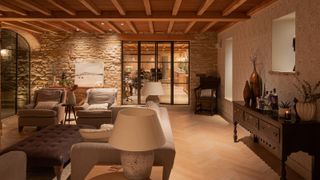
Getting your lighting design right and avoiding lighting design mistakes is not just about making your home brighter. “Lighting is one of the most crucial yet often overlooked aspects of interior design," says Jo Plant, head of design at Pooky, "and yet poor lighting can drastically impact both the atmosphere and functionality of your home."
So what are the most common lighting design mistakes and how can we avoid making them? We asked experts to shine a light on some of the most fundamental errors in order to help you create a warm, practical and well-lit environment for your new self-build or renovation.
From changing the way you think about lighting, to getting the timing and balance right, here's what they suggest.

Jo Plant is Head of Design and Production for Pooky, and has a wealth of lighting knowledge to share.
Lighting design mistake one: Leaving it too late
"If I had to impress one thing on people about lighting design, it would be to design it early in the build," says Melanie Shaw, design director of Brilliant Lighting. "The single biggest mistake people make is simply leaving it too late in the build or renovating process.
"If your electricians are about to arrive, or even on site, you've left it too late to start thinking about your lighting design ideas," says Melanie Shaw. "There needs to be a real education process about timing. It’s the single biggest thing most people (not all) could do better to help themselves.
"The key to avoiding costly mistakes is to consider the distribution of light sources early in the process," agrees Mara Rypacek Miller, founder of Industville.
"Before the wiring goes into the walls or you purchase any lighting fixtures, develop a comprehensive plan that considers the layout of each room, the natural light available, and the function the space will serve."
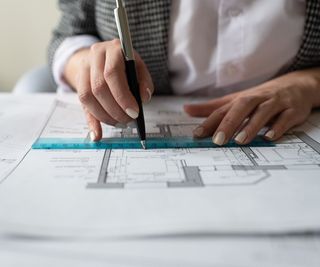
So why do we leave it so late and what are the consequences?
"I think people look at the phases of a build, see that light fittings go in at second fix, see that the infrastructure and wiring goes in at first fix and settle on first fix as the time they should start thinking about lighting," says Melanie Shaw. "But this is too late, it should be decided way before the electricians arrive.
"What they don’t realise is the lighting design is effectively fixed in place once the cables have gone in. So, some of the options they might decide to think about later, such as floor recessed uplighters, or in-floor sockets for 5 amp circuits in the middle of a room (for table lamps not near a wall), will no longer be possible if they haven't run cables for them. If they have underfloor heating for example, once this has gone in, it the floor is effectively out of bounds."
"Planning wiring is key," says Mara Rypacek Miller, "including adding extra points to give you flexibility to adjust the lighting design. We often hear of customers not considering adding wiring for wall lights before plastering, which means they need to add in more light sources like lamps to spread out lighting within a room away from central overhead light sources, often referred to as ‘the big light’. Adding those couple extra points for wall lights in the first fix will pay dividends on the atmosphere of the space."
"You wouldn’t wait until your kitchen fitters are onsite to start designing your kitchen," says Melanie Shaw, "so you shouldn’t be trying to design your lighting while your electricians are pulling cables."
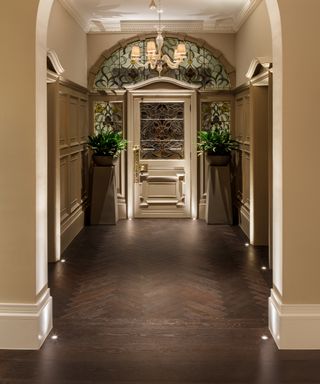

Melanie Shaw is Design Director of Brilliant Lighting, the award-winning lighting design company she founded in 2004.

Mara leads a creative revolution in sustainable interior design and is the industrious founder of Industville. With a keen eye for detail and a commitment to eco-conscious craftsmanship, Mara has propelled Industville to the forefront of the industry, where each design tells a story of timeless elegance and environmental responsibility.
Ligting design mistake two: How you think about lighting
"Don’t think solely about where the lights are going to go," says Melanie Shaw, "think about where the light is going to fall as that’s where your eye will go.
"It’s worth investing time in visualising the space and understanding what the focal points are going to be in your architectural and interior design so your lighting can help put them front and centre.
"It's also worth trying to envisage what the problem or tricky areas are going to be," says Melanie. "That might seem harder in a new build where you might just be looking at a plan and a hole in the ground, but elevations on a plan will give you a better feel than layouts on their own," she adds.
“When homeowners are deep in the build process it’s easy to overlook the finer details of lighting design that make a space truly enjoyable to be in," says Mara Mypacek Miller. The result of not thinking about lighting in the right way? "Too much light, especially overhead, will overstimulate, while not enough light can leave a room feeling uncomfortable, impractical, or just plain unwelcoming."
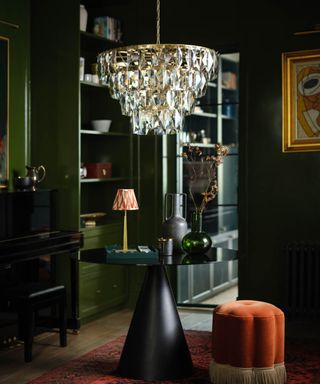
Lighting design mistake three: Only using one light source
“One of the most frequent mistakes in indoor lighting is relying on a single light source, typically an overhead fixture," says Jo Plant. "This approach can result in flat, uninspiring lighting that fails to highlight the room's best features. Instead, aim to layer your lighting by combining ambient, task, and accent lights.
"For instance, use ceiling lighting ideas such as pendant lights or chandeliers to provide general illumination, complement them with task lighting like desk lamps or under-cabinet lights for specific activities, and add accent lighting such as wall sconces or picture lights to highlight artwork or architectural details," suggests Jo.
“In areas where specific tasks are performed – like lighting a kitchen island, home offices, or bathroom lighting ideas – task lighting is essential. A common mistake is to assume that general lighting is sufficient, leading to poorly lit workspaces that can cause eye strain and reduce efficiency.
"Ensure your kitchen counters, desks, and bathroom mirrors are well-lit with targeted lighting, such as adjustable pendant lights or under-cabinet LEDs, to provide the brightness necessary for these activities."
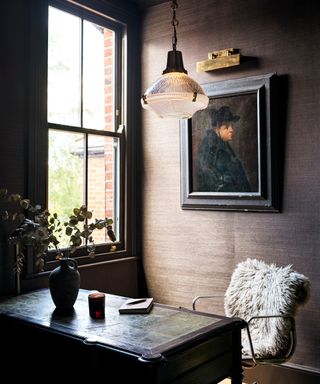
Lighting design mistake four: Form over function
While it can be easy to fall in love with the look and design of a certain light fitting, or even decide to follow lighting trends, if they don't provide the right kind of light in a room, it can turn out to be a waste of money. Instead of focusing on the lights themselves, you should instead think of how you will use the room in order to decide what lights you need to buy.
"It’s a lot easier to plan and buy the right lighting if you concentrate on how you are going to use the house," says Melanie Shaw. "If you can visualise yourself working, chilling and living in the different spaces you will get much more of an idea of where, and when you want light.
"Your needs change over the course of a day," she says, "and will alter depending on what you are doing. Don’t think 'where am I going to put lights', think 'what kind of light am I going need here when I am doing that'. It’s a much more productive vein of thought."
And don't forget the weather and the impact this has on your natural lighting, says Claire Pendarves, independent lighting consultant for The Soho Lighting Company.
"We need to plan the interior lighting for all times of the day and night but gloomy days are worse, especially in the UK. Large spaces that have a good deal of natural light coming from only one side need careful consideration as otherwise one section of the area can feel unbalanced," explains Claire. "Try and bring some light to the rear to soften the disparity."
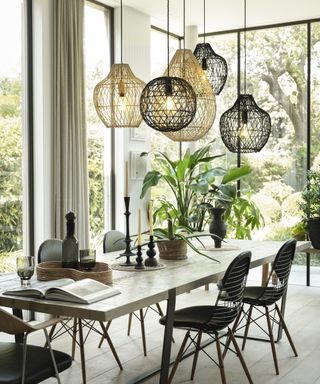

Claire originally trained and worked as an interior designer in London before changing course to specialise in lighting. She realised that no matter what attention is paid to furniture, fabrics, flooring and window treatments it’s the lighting predominantly that can totally transform a space.
Lighting design mistake five: Lack of circuits and switches
"One thing that immediately sets a carefully considered lighting design apart from a generic lighting plan is that the lighting is broken down into enough circuits to give you the flexibility to achieve very different lighting effects," says Melanie Shaw.
But how do you get your lighting circuits right?
"Think about the different layers of lighting you might use or the different uses the lights have, and keep them separate," advises Melanie. "It’s easy to combine multiple circuits of light together to achieve an effect; it’s impossible to achieve different effects from a space that's only wired to one or two circuits."
And, once you've created your circuits, don't make the mistake of getting your switches in the wrong place - or not having enough of them, says Claire Pendarves.
"Never underestimate how many switches you will need. Walk through the space in your mind and think of every scenario," she advises. "Do you really want to be walking half way down a hallway to turn off a light when you could have the switch easily to hand?"
Melanie Shaw's advice for helping with your switch distribution?
"A lighting control system can make a carefully designed, multi-circuit lighting scheme much easier to use than a huge bank of conventional rotary dimmers," she says. "This isn’t about controlling your lights with your phone or smart speaker," adds Melanie, "although that’s all perfectly possible with smart lighting. Simple, backlit, engraved keypads in classic finishes are the ideal partner for a great lighting design and you and your guests will love them."
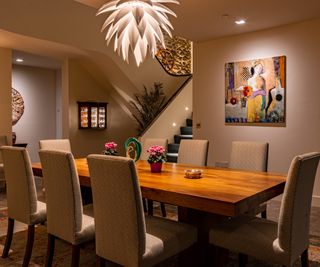
Lighting design mistake six: Choosing the wrong temperature lights
Understanding the difference between cool light vs warm light can drastically affect the end result of your lighting scheme. And knowing when to use each type is critical.
“The color temperature of your bulbs can significantly influence the mood of a room," says Jo Plant. "Many homeowners make the mistake of using bulbs with a high colour temperature (above 4000K) in spaces meant for relaxation, which can result in a cold, clinical atmosphere.
If you're not sure what temperature lights work best in different spaces, Jo recommends the following.
"Opt for warmer bulbs (around 2700K-3000K) in living rooms, bedrooms, and dining areas to create a cozy, inviting environment, and reserve cooler lighting for task-oriented spaces like the kitchen or home office."
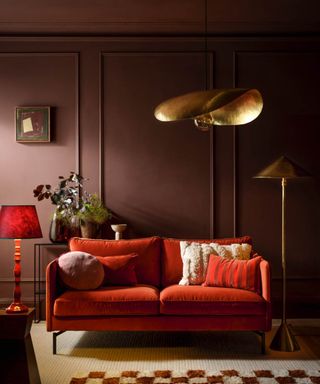
Lighting design mistake seven: Poor quality purchasing
"Lighting is one of the most enduring elements of a house," says Melanie Shaw. "You will refresh almost all of the interiors in a house before you rewire, and everything in your house - the fabrics, the furniture, the materials, the paints and finishes will all come to life with high quality lighting."
The consequence of poor lighting? "Everything will be flattened and dulled by poor quality lighting," says Melanie. "Look for fittings with excellent colour rendering and ideally test them to make sure they give you the look and feel you are planning. Investing in the best quality of fittings will pay dividends."
"Remember that it's also the finishing touches such as superior door furniture and opting for quality when choosing the best light switches that lift the caliber of an interior to a higher level," adds Claire Pendarves.
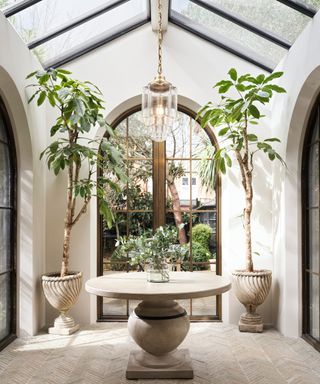
Mara Rypacek Miller's final tips for avoiding lighting design mistakes?
"For extra peace of mind consider consulting an expert lighting designer that knows lighting," she says, "as they may quickly spot something you haven’t.
"And also don't make the mistake of opting for non-energy-efficient lighting solutions that can lead to higher electricity bills and a larger carbon footprint. Instead, consider energy-efficient options like the best LED bulbs that are not only better for the environment but also more cost-effective in the long run."
Get the Homebuilding & Renovating Newsletter
Bring your dream home to life with expert advice, how to guides and design inspiration. Sign up for our newsletter and get two free tickets to a Homebuilding & Renovating Show near you.

Sarah is Homebuilding & Renovating’s Assistant Editor and joined the team in 2024. An established homes and interiors writer, Sarah has renovated and extended a number of properties, including a listing building and renovation project that featured on Grand Designs. Although she said she would never buy a listed property again, she has recently purchased a Grade II listed apartment. As it had already been professionally renovated, she has instead set her sights on tackling some changes to improve the building’s energy efficiency, as well as adding some personal touches to the interior.